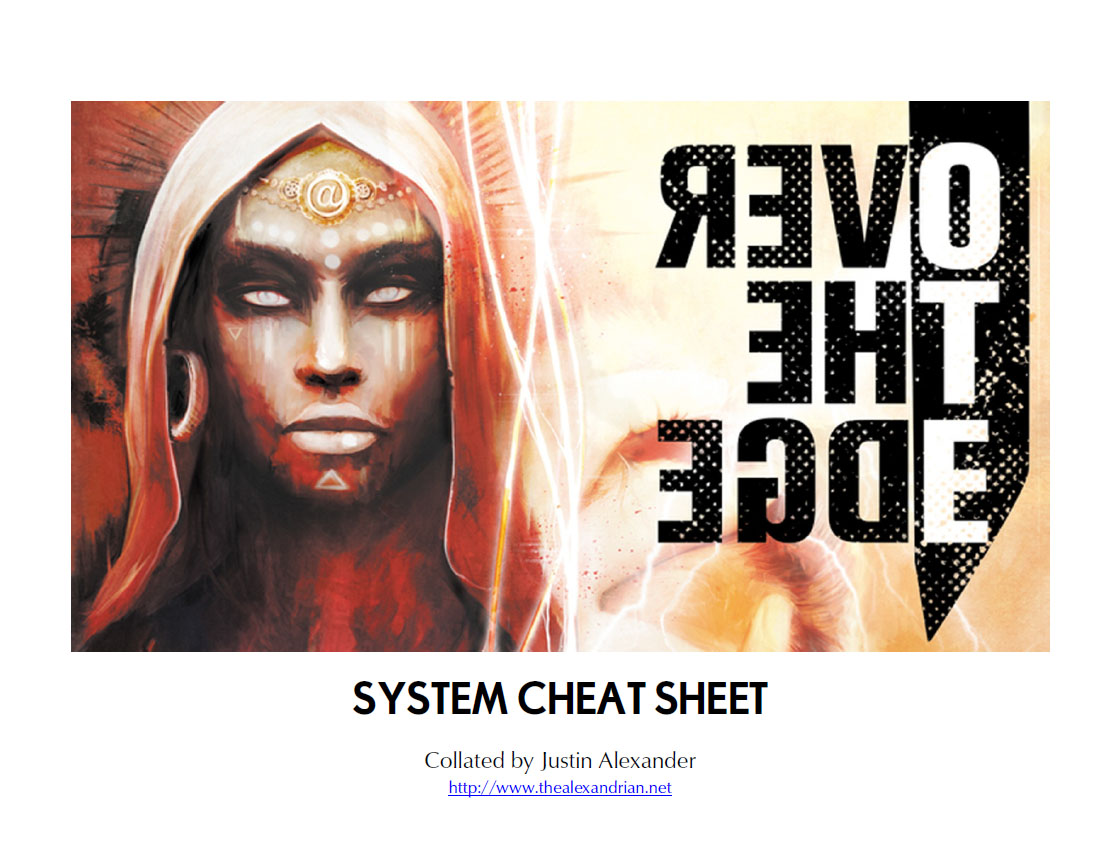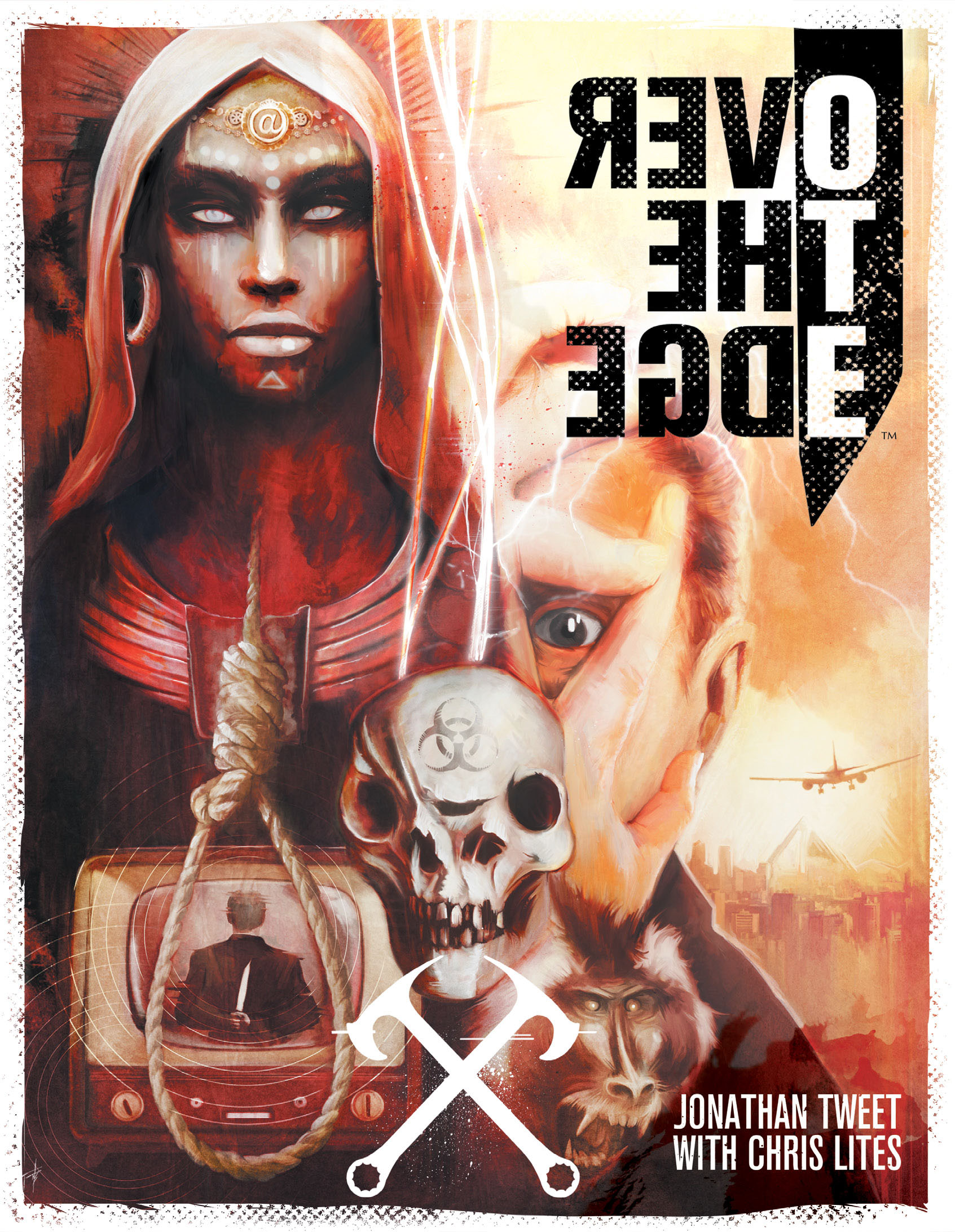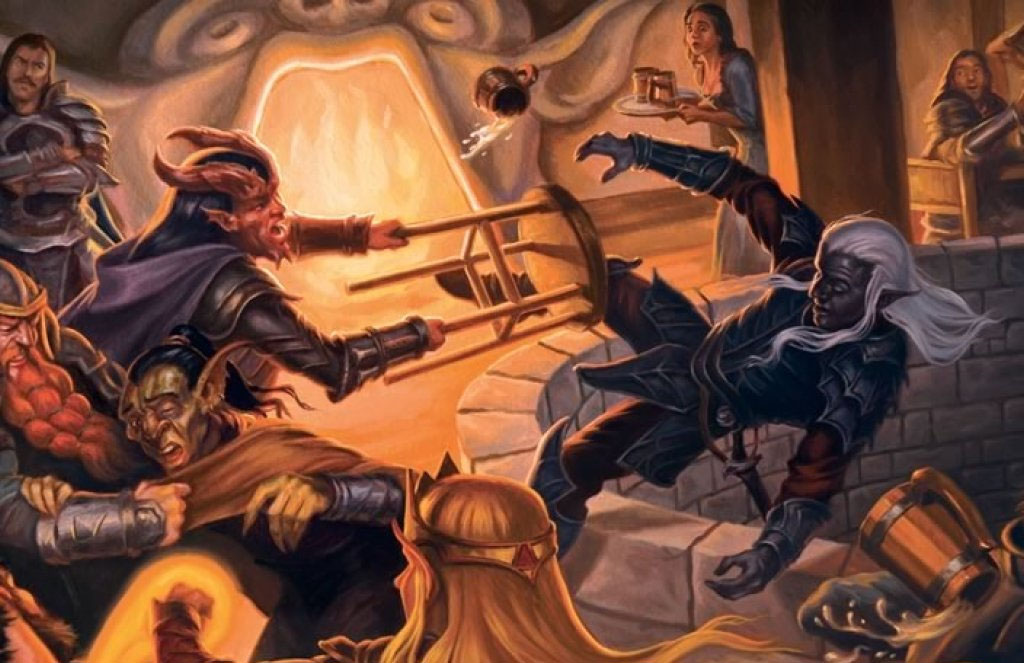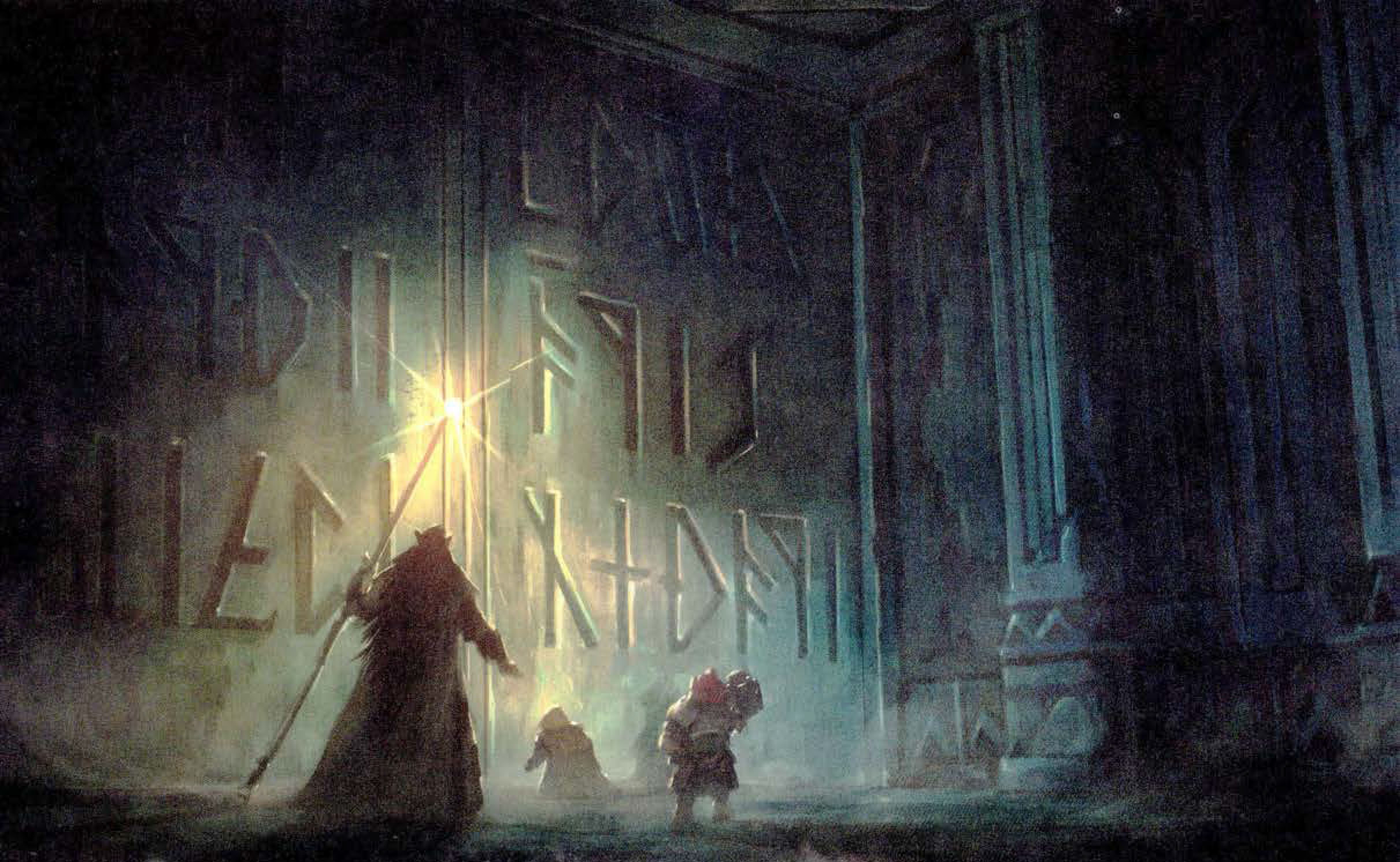
Go to Part 1
The vault in which Lord Neverember hid his stolen wealth was, in fact, constructed by the Melairkyn dwarves thousands of years ago and, today, lies beneath the Brandath family crypts.
Clan Melairkyn were the first to begin excavating beneath what is now Waterdeep. The earliest portions of Undermountain were, in fact, the Underhalls in which they made their homes and wrought their mithral-craft.
Near the Underhalls, the also built a ceremonial vault. The Melairkyn were worshippers of Dumathoin, the Keeper of the Mountain’s Secrets. Their cult believed that Dumathoin encoded his secrets in the veins of ore and precious stones he placed in the mountains he raised from the earth for the dwarven people. In their mining, the dwarves released Dumathoin’s secrets into the world. This angered Dumathoin and there was a period of discord beween the dwarves and the Mordinsamman (the council of dwarven gods). In order to appear Dumathoin and to protect his secrets, the cult would mystically bind the “secrets of the mountain” into items of finely-wrought dwarfcraft and then make offering of it to Dumathoin by securing them within ceremonial vaults.
After the Melairkyn civilization fell before an invasion of dark elves, the vault was looted and abandoned, its secrets – whatever they may have been – scattered to the corners of the world. The entrance was eventually buried by the passage of time. Nearly a millennia passed before the city of Waterdeep was founded, and the area near the vault became used as a burial ground which would expand to become the City of the Dead.
The Brandath family eventually constructed a mausoleum on the site. A hundred years later, as the mausoleum was being expanded, the excavations broke through into antechambers of the Melairkyn vault. Struck by the grand and mysterious beauty of the vault, the Brandaths of the time concealed the vault’s existence and used it as a site for performing ritual mummery based loosely on the original Melairkyn rituals as part of a secret fraternal order known as the Brothers of the Maroon Pin. A scandal eventually saw the Maroon Brotherhood shut down, and the vault lay largely forgotten under the Brandath mausoleum.
When Lady Alethea Brandath died, however, her husband, Lord Neverember, discovered the existence of the vault while making preparations for her internment in the old mausoleum. Gaining access to the inner vault, he realized it would be a perfect place to store the money he was embezzling from the city.
Once the money was safely ensconced, Neverember concealed the location of the vault using the Stone of Golorr. After blinding the Stone, he hid one of the Eyes in a crypt near his wife’s. His logic was that no one knew where the Vault was located except him, so no one would look there.
Lord Dagult, however, had not counted on the perseverance of the Cassalanters.They performed an exhaustive survey of sites associated with Lord Neverember, including his wife’s tomb. There they discovered the hiding place of the Eye and took it. (Ironically, they never realized they were standing almost directly above the vault.)
THE CITY OF THE DEAD
In 1250 DR, when Waterdeep’s graveyard had become hopelessly congested with the dead, the city began constructing public mausoleums and the character of the City of the Dead was permanently changed. Today much of it is a public park, dotted with mausoleums and crypt-complexes. (See Dragon Heist, p. 179.)
DUSK: At dusk, hundreds of driftglobes make their way from the inhavited part of the city and congregate in the City of the Dead. They spend the night here and then disperse, returning to the waking city at dawn. No one knows the reason for this.
NIGHT: At night, the City of the Dead is closed. Two city guards are stationed at each entry gate. It requires a DC 15 Dexterity (Stealth) check to slip over the walls.
GUARDIANS
SIR AMBROSE EVERDAWN (LG male human Tethyrian knight): An aging servant of Kelemvor (god of the dead), patrols the cemetery from sunset to sunrise, chasing off grave robbers and making sure the dead stay buried. Characters who creep around the cemetery in the dark have a 30 percent chance of running into him. If that happens, he escorts them out and alerts the City Guard if they refuse to leave.
BRANDATH TREANT: The largest tree growing by the main entrance to the Brandath Mausoleums is a treant. It awakens when one or more creatures approach and growls, “Only those of Brandath blood are welcome here! Begone!”
If someone other than a Brandath attempts to enter a mausoleum, the treant will animate two trees and attack. The treant and its animated allies are too big to enter all but the main chambers of Mausoleum C.
If Renaer Neverember (of Brandath blood) is present, the treant allows him and his companions to pass unmolested. It says to Renaer in passing, “Your mother was a lovely person.”
MAUSOLEUMS
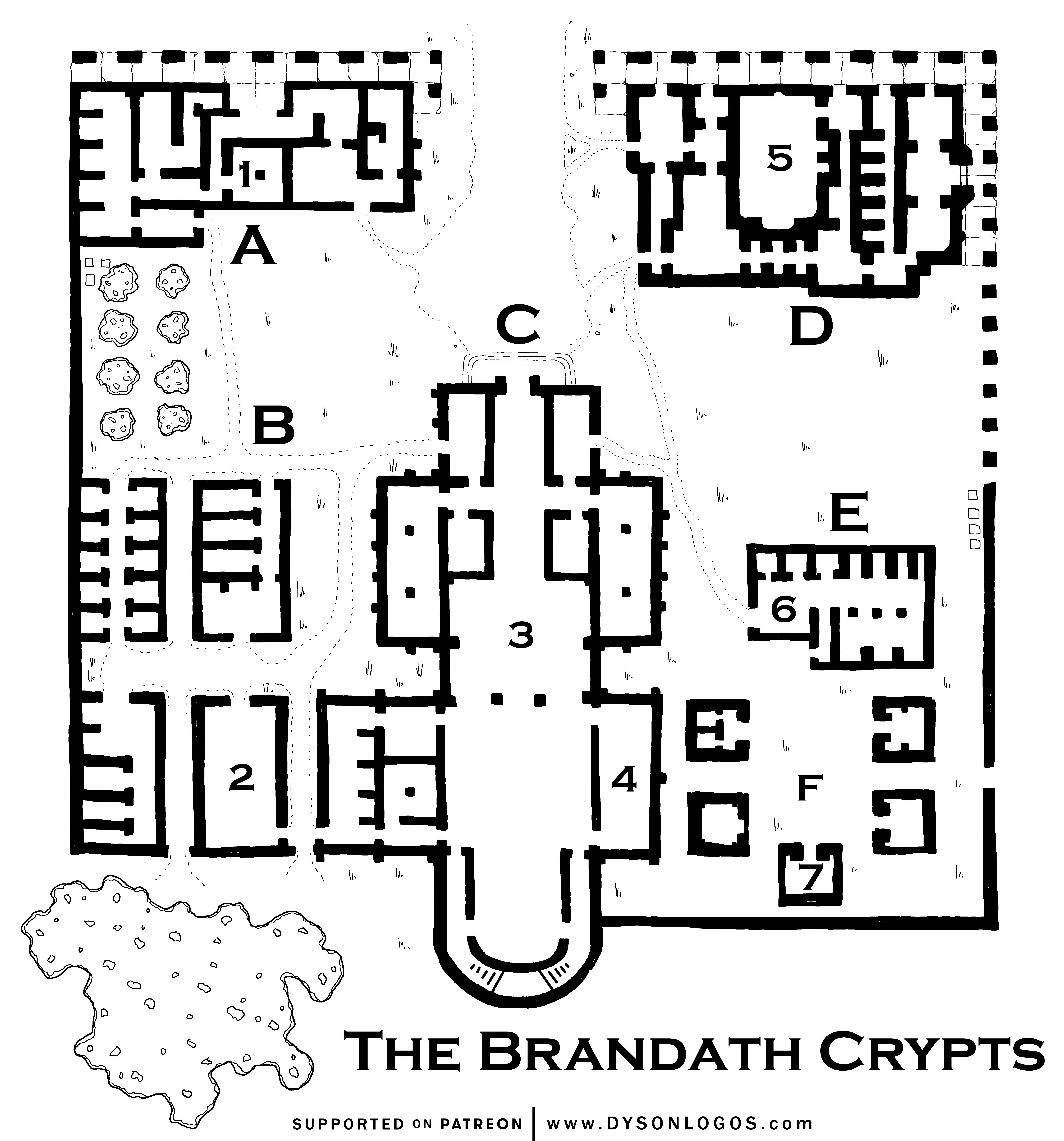
The first small mausoleum built on this site was expanded with various antechambers and new crypts to hold additional members of the Brandath family. Other single-occupant mausoleums were added around the original structure, although many of these were subsequently razed to make way for the larger structures which now form the rambling crypt-complex of the Brandath family.
GENERAL FEATURES:
- Doors: The stone doors of the mausoleums are generally locked (DC 15 Dexterity check to pick the lock; DC 25 Strength (Athletics) check to force it).
- Coat of Arms: The Brandath coat of arms can be found upon the floor of each mausoleum. An DC 15 Intelligence (History) check can determine, based on the variations and progression of the heraldry, which of the buildings is oldest. (D is the oldest, followed by F, B, A, C, and E.)
MAUSOLEUM A – CELESTIAL STATUES: When this mausoleum was built, the popular style was for each grave to be marked with a statue of the deceased rendered as if they had been reborn as a celestial: Wings, glowing eyes (by way of persistent spells), and halos are common. One is carved as if they were an Empyrean – although the statue is life-size, it is surrounded by faceless, miniature people suggesting that its trues scale is much larger. Others are accompanied by couatl, pegasi, and the like.
- AREA 1: The statue in this chamber was enchanted to sing when mourners drew near. Over the centuries, however, this enchantment is fading and the voice fades and cuts, creating an unsettling and atonal melody.
MAUSOLEUM B – THE OSSUARIES: These four buildings in the southwest corner of the crypt-complex have been transformed into (or were built as) ossuaries. Some were “buried” by having their bones directly placed in these ossuaries, but in other cases bodies were moved here in order to make room for new arrivals elsewhere in the crypt-complex.
- AREA 2: The floor-to-ceiling shelving that once held the bones in this ossuary has collapsed, filling the entire building with tumbled piles of bone. 6 crawling claws (MM, p. 44) scurry among and tunnel through the bones (leaping out from unexpected angles).
MAUSOLEUM C – THE GRAND CRYPT: This two-storey tall building was built at the height of the Brandath family’s power and influence. Constructed of marble and porphyry, its Doric architecture is redolent of 13th century Illuskan revivalism. The name BRANDATH is carved in Thorassian (common) letters above the doors.
- AREA 3: The vaulted main hall of the grand crypt is perpetually lit by three chandeliers with blue everburning candles. Plaques upon the floors and walls indicate where dozens of people have been laid to rest seemingly behind every wall. Bas reliefs serve as strange death masks.
- AREA 4: This side chamber is taken up almost entirely by the tomb of Sir Jom Shiaon Brandath, a half-giant. Carvings around his titanic sarcophagus indicate that he died seeking vengeance again “Lord Bombur,” who had “cruelly butchered” Sir Jom’s family with a cowardly assault upon his keep while Sir Jom was on campaign in the First Dragonspear War (1356 YD).
- SECOND FLOOR: The stairs at the south end of the building lead up to a second floor of tight, claustrophobic passages lined with crypts.
MAUSOLEUM D – THE FIRST CRYPT: This building is the oldest in the crypt-complex. BR_N__TH CRY_TS is carved in faded letters of the Dethek alphabet above the eastern doors. Age-worn stone can be seen everywhere, along with clear signs of repeated renovation. Individual crypt sites have been renovated, moved, and even removed over hundreds of years.
- AREA 5: This room was the original mausoleum on this site. See “Lady Alethea’s Tomb,” below.
MAUSOLEUM E – ULD’S CRYPT: Despite being the newest construction in the crypt-complex, this mausoleum is in very poor repair. Part of the roof has caved in, crushing several of the tomb sites within.
- AREA 6: A gravemarker identifies the sarcophagus here as belonging to Uld Brandath, a Waterdhavian magister who died in a freak accident years ago. (A gargoyle broke off the corner of a government building and fell on Uld, crushing him.) One corner of his sarcophagi has been staved in by the collapsed ceiling. Uld’s skeletal corpse wears a headband of intellect.
- CRAWLING CLAWS: Six crawling claws (MM, p.44), made from the hands of murderers who were sentenced to death by Uld, escaped from his sarcophagus and now infest the building.
MAUSOLEUM F – SMALL MAUSOLEUMS: Originally there were several dozens of these smaller mausoleums located in the Brandath crypt-complex, each containing a single body (or perhaps a small family unit). Many were raised in order to build the Grand Crypt and, more recently, Uld’s Crypt.
- AREA 7: One of the small mausoleums is obviously of much newer construction than the others. The name “LORD ANRI BRANDATH” is carved above the door. On the relatively plain sarcophagus inside, two dice appear to have been carelessly tossed (reading snake eyes). Lord Anri is, in fact, buried here. Lord Dagult had this mausoleum built and transferred Lord Anri’s body here when he renovated Lord Anri’s original resting place (see “Lady Alethea’s Tomb”).
- GM Note: Combined with the vision granted by the Stone of Golorr, this will likely function as a red herring for PCs who believe the Vault lies beneath Lord Anri’s tomb.
LADY ALETHEA’S TOMB
This room was actually the first Brandath mausoleum and it was the burial site of Lord Anri, who rested here undisturbed for many hundred years while his descendants lived, died, and were buried around him.
The ego of Lord Dagult Neverember, however, manifests in myriad ways. When his wife, Lady Alethea Brandath, died, Lord Dagult wished to exult her in death. Lady Alethea, however, had requested a simple tomb in the Brandath Crypts. Nevertheless, Lord Dagult got what he wanted by refurbishing Lord Anri’s tomb and burying her there, giving her a place of primacy.
LADY ALETHEA’S SARCOPHAGUS: Clearly newer than the rest of the crypt, a bouquet of wilted flowers lies atop her sarcophagus (which is sculpted in her likeness).
- GM Note: The flowers were left by Renaer.
PORTRAIT ON THE CEILING: A faded, chipped portrait of Lord Anri adorns the the plaster ceiling. He is identified in the portrait with a labeled banner. Fresh script around the perimeter of the painting reads, in four languages, “The beauty of our age, in death, is watched over by the spirits of her ancestors.”
- DC 14 Intelligence (History): The portrait was actually added to the crypt several centuries after Lord Anri’s time. In the portrait, he is wearing an alexandrite-tipped pin and is holding a distinctive dwarven compass in his left hand. (DC 17: These are symbols of the Maroon Brotherhood, an obscure fraternal order that was once active in Waterdeep but not longer exists.)
- GM Note: Lord Anri was not a member of the Maroon Brotherhood; the painting was commissioned by the brotherhood and added the symbolism retroactively.
SECRET PASSAGE: A DC 15 Wisdom (Perception) test discovers that the southern wall of the crypt is false, disguising the staircase leading to the old crypts beneath the mausoleum.
THE OLD CRYPTS
See the map on p. 71 of Dragon Heist.
STAIRS DOWN: Sconces for torches are placed on the walls, but there are no torches within them. The airy is dry. There is a thick coating of dust, but a large amount of fairly recent traffic has disturbed it up and down the main hall.
- DC 12 Intelligence (Investigation): The top step is scorched by a recent explosion. A DC 12 Intelligence (Arcana) check identifies this as the remains of a triggered glyph of warding. (GM Note: Triggered by the Cassalanter team that removed the Eye.)
AREA M2: One of the sconces has been ripped from the wall here and tossed to the floor.
- DC 14 Intelligence (Investigation): The remnants of a glyph of warding can be found on the floor here. It’s been rendered inactive by someone blotting out several key strokes of the glyph.
- Sconce: There was a secret compartment behind the sconce. It’s empty now. (GM Note: This is where Lord Neverember hid the Third Eye, which the Cassalanters then stole.)
TO THE VAULT: The collapsed eastern end of the tunnel is actually an illusion that conceals an intact archway filled with a heavy door of steel.
- The Arch: The keystone of the arch is decorated to appear like a mountain with a purple alexandrite gemstone in the middle of it (a variation of Dumathoin’s holy symbol). The voussoir have various symbols carved in them in alternation with dwarven runes: A dwarven compass, a serpent’s forked tongue, a scarabaeus, a brain with two tentacles (Ilsensine’s holy symbol), a broken arrow (Laduguer’s holy symbol). (GM Note: These are all symbols of the Maroon Brotherhood.)
- The Door: Obviously much more recent than the surrounding stonework (it was installed by Lord Dagult to provide some actual physical security for the vault), and has actually damaged some of the ancient symbols on the arch. It’s a 2-foot-thick vault door, with a DC 22 lock. There’s an alarm spell on the door, but it’s keyed to Lord Dagult and, assuming he’s still in Neverwinter, he’s too far away to get the ping.
- Beyond the Door: A 10-foot-wide hallway that slopes down to the Vault (see Part 6C). A glyph of warding has been placed so that it triggers on anyone stepping through the door.
DESIGN NOTES
Pretty much everything I’m doing here is aimed at giving the conclusion of the campaign enough weight to feel meaningful. Exploring the mausoleums and their history isn’t a particularly meaty interaction, but it invests the player into a specific place with specific meaning before they crack open the Vault. It also provides a nice thematic loop with the beginning of the campaign, which started with the PCs rescuing Renaer Neverember and getting drawn into his family’s drama.
Go to Part 6C: The Vault

